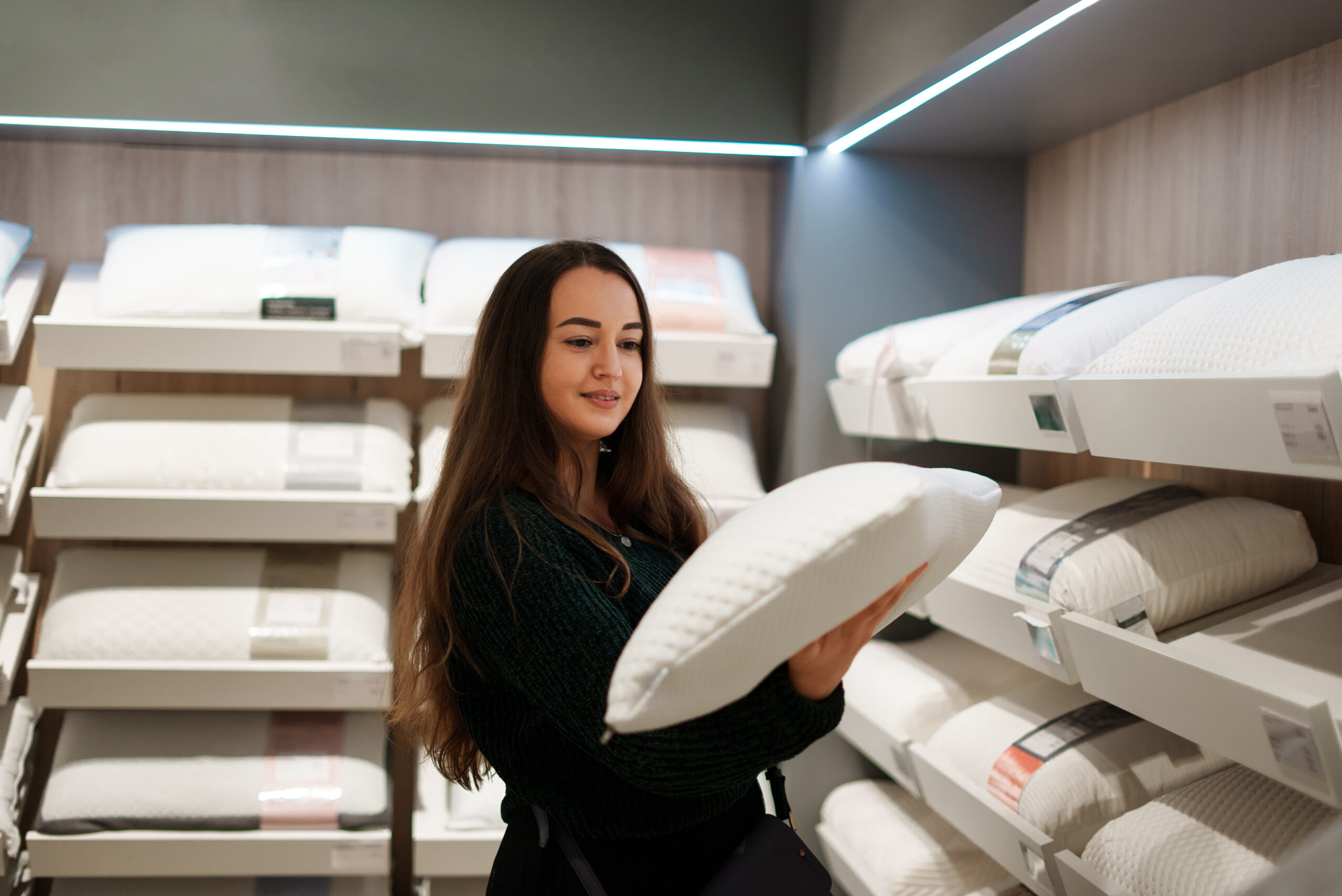The Science Behind Orthopedic Pillows: Do They Really Work?
Introduction
Have you ever tossed and turned during the night, struggling to find a comfortable sleeping position, or woken up with a stiff neck or backache? The culprit could be your regular pillow. But don’t worry, the world of sleep science has something designed specifically to help: orthopedic pillows.
Orthopedic pillows, a product of meticulous design and scientific research, are touted as the perfect solution for such sleep disruptions. Crafted to provide optimal support to your body’s natural alignment, these pillows aim to eliminate the common problems associated with traditional pillows. However, the question arises: Do orthopedic pillows really live up to their claims? Do they truly enhance our sleep quality and contribute to better health? In this comprehensive guide, we dive into the science behind orthopedic pillows and explore their effectiveness, providing you with the knowledge you need to decide whether investing in an orthopedic pillow from XenPillow could be the key to unlocking a better night’s sleep.
Purpose and claim of orthopedic pillows
Orthopedic pillows, also known as therapeutic pillows, are pillows designed to correct body positioning in bed or while lying on any other surface. Their design conforms to orthopedic guidelines to ensure the right placement and support of one or more specific parts of the body to provide safe and healthy rest to the sleeper. These pillows may be made from different materials such as memory foam, latex, or filled with air or water.
So, what is the primary purpose of orthopedic pillows? Their design and materials aim to provide optimal support to the natural curves of your body, particularly the neck and spine. The promise of these pillows is to reduce stress on your neck and spine, reduce pressure points, improve blood circulation, and ultimately alleviate pain, ensuring a comfortable, restful sleep.
Importance of good sleep and posture for overall health
But why is this important? The importance of good sleep and maintaining the correct posture cannot be overemphasized. Quality sleep is a cornerstone of good health, contributing to a stronger immune system, better mood, sharper brain function, and more. Simultaneously, proper posture, especially while sleeping, is vital in reducing unnecessary stress on your body. It helps keep bones and joints in correct alignment, reducing the risk of developing chronic pains.
Orthopedic pillows aim to harmonize these two critical elements – quality sleep and good posture. They provide an innovative solution to many sleep-related issues, offering a range of health benefits that go far beyond a good night’s sleep. In the following sections, we will delve deeper into the science behind orthopedic pillows and explore whether they live up to their claims.

Brief history of orthopedic pillows
The concept of an orthopedic pillow is not as modern as you might think. The ancient Egyptians were arguably the first to use them, as they understood the value of elevating the head for better sleep. They used stones or blocks of wood designed to support the neck and head, effectively the forerunners of today’s orthopedic pillows. While these early versions were far from the comfortable materials we have today, they laid the groundwork for what was to come.
In the 1960s, orthopedic pillows began to resemble the ones we know today, focusing more on comfort while still promoting good posture. As sleep science and materials technology advanced over the years, manufacturers started offering more sophisticated designs and materials, like memory foam, to aid in better sleep and relieve various physical ailments.
Now let’s explore the different types of orthopedic pillows that have evolved over time and their unique benefits. These include cervical, lumbar, wedge, and knee pillows.


Cervical pillows
Cervical pillows, often referred to as neck pillows, are designed to support the neck, head, and shoulders to maintain the proper alignment of the cervical spine. They can significantly benefit those who suffer from neck pain or stiffness, ensuring a good night’s sleep and promoting healing of the affected area.

Lumbar pillows
Lumbar pillows are primarily used when sitting to support the lumbar region or the lower back. They help maintain the natural inward curvature of the lumbar spine, reducing the risk of lower back pain, a common complaint among sedentary and active individuals. While these pillows are typically used when awake, they can also be useful for side sleepers if placed between the knees.

Wedge pillows
As the name suggests, Wedge pillows are triangular-shaped and shaped like a wedge. They can elevate different body parts, such as the head, shoulders, or legs, to alleviate conditions like acid reflux, snoring, or leg swelling. The versatile wedge pillow makes it a valuable addition to any home.
Knee pillows
Finally, knee pillows are typically placed between the legs when sleeping. They are especially beneficial for side sleepers, helping to align the hips and legs and reducing the pressure and strain on the lower back and hips.
Understanding the different types of orthopedic pillows and their uses can help you decide the best one for you. Whether you’re seeking relief from a specific condition, seeking better sleep, or wanting to improve your overall posture, an orthopedic pillow is likely designed with your needs in mind.

Overview of Human Anatomy relevant to sleep posture
To understand the science behind orthopedic pillows, it’s crucial to first comprehend some basic principles of human anatomy relevant to sleep posture.
Spinal Structure
Our spinal structure plays a vital role in maintaining overall body alignment and flexibility. The spine has three natural curves: at your neck (cervical), mid-back (thoracic), and lower back (lumbar). These curves help to distribute mechanical stress as we move and bend. Maintaining these curves during sleep is essential to avoid waking up with stiffness or pain.
Neck Structure
The neck structure is part of the uppermost curve of the spine (cervical). It’s designed to support the weight of the head and protect the spinal cord running through it. Any misalignment, like the ones caused by an unsupportive pillow, can lead to neck pain or headaches.
Body Alignment
Body alignment refers to the position of your body parts in relation to each other. Proper body alignment during sleep means your ears, shoulders, hips, knees, and ankles align in a straight line. This alignment reduces stress on your spine and joints, preventing long-term damage or pain.

A detailed explanation of how orthopedic pillows work
Orthopedic pillows align the neck and spine, reduce pressure points, and promote blood circulation. They ensure that your neck and head are supported to maintain the natural curve of your spine. By doing so, they alleviate the strain on your muscles and ligaments, providing relief from neck and back pain.
Reducing pressure points
Reducing pressure points is another critical function of orthopedic pillows. Pressure points are areas where your body weight presses down on the bed, leading to discomfort or pain. These pillows distribute your weight evenly, alleviating pressure on these points and providing pain relief.
Promoting blood circulation
Furthermore, proper alignment facilitated by orthopedic pillows can improve blood circulation. Better circulation reduces the risk of developing conditions like varicose veins and helps in the quick healing of injuries.
Orthopedic pillows also make use of material science. Memory foam, a common material in these pillows, has a unique ability to conform to the body shape in response to pressure and heat, providing personalized support. It reduces pressure points and keeps the spine in natural alignment.
Material science involved in orthopedic pillows
Other materials used in orthopedic pillows include latex, polyester, and buckwheat hulls. Latex pillows offer firm support and maintain their shape well. Polyester is a more budget-friendly option, while buckwheat hull pillows are adjustable and provide excellent support.
The science behind orthopedic pillows involves a blend of human anatomy, physics, and material science. These pillows are engineered to provide optimal comfort and support, ensuring a good night’s sleep and a healthier lifestyle.
Do Orthopedic Pillows Really Work
The burning question on everyone’s mind is: do orthopedic pillows really work? The answer isn’t as straightforward as you might expect because several factors come into play. To address this question, we’ll look at scientific studies, expert opinions, and consider the various factors that can affect the effectiveness of orthopedic pillows.
Scientific research provides substantial evidence for the effectiveness of orthopedic pillows. For instance, a study published in the Journal of Physical Therapy Science found that cervical pillows can significantly improve sleep quality and reduce neck pain. Similarly, a study published in the Journal of Chiropractic Medicine found that lumbar support pillows can reduce lower back discomfort in people who spend long hours sitting.
Expert opinions also largely support the use of orthopedic pillows. Many healthcare professionals, including chiropractors, physical therapists, and orthopedic doctors, recommend them for people with chronic neck or back pain. According to Dr. Andrew Hecht, chief of spine surgery at Mount Sinai Health System in New York, a supportive pillow that maintains the natural cervical curve can significantly help manage neck pain.
Despite this positive evidence, it’s essential to note that the effectiveness of orthopedic pillows can be influenced by various factors. The individual’s sleeping position is one such factor. Side sleepers may benefit from a knee or cervical pillow, while back sleepers might find a lumbar or wedge pillow more beneficial.
Existing medical conditions also play a crucial role. For instance, someone with osteoarthritis in the neck may need a different pillow compared to someone with acid reflux or sleep apnea. Thus, it’s recommended to consult with a healthcare professional before choosing an orthopedic pillow.
Finally, the design and materials of the pillow are significant factors. Not all orthopedic pillows are created equal, and a pillow’s effectiveness can vary based on its design, firmness, and materials used. For example, memory foam is excellent for contouring and reducing pressure points, but it may retain heat. Latex, on the other hand, offers good support and cooling properties but may be too firm for some people.
While orthopedic pillows can be beneficial, their effectiveness can vary based on several factors. Therefore, it’s important to research, consult with a healthcare professional, and consider your unique needs and preferences when choosing an orthopedic pillow.
Considerations When Purchasing Orthopedic Pillows
When purchasing an orthopedic pillow, there are several crucial considerations to keep in mind to ensure you select the right one for your specific needs.
How to choose the right orthopedic pillow based on individual needs
Firstly, choosing the right orthopedic pillow involves considering your sleeping position, specific discomforts or pains, and personal comfort preferences. For instance, side sleepers might find a knee pillow or a cervical pillow beneficial, while back sleepers may opt for lumbar or wedge pillows. If you experience neck pain, a pillow that supports the natural curvature of your neck, such as the XenPillow, can be especially helpful.
Potential issues and side effects of using orthopedic pillows
Despite the benefits, potential issues and side effects can arise when using orthopedic pillows. Some individuals may experience discomfort when first using these pillows, as they adjust to the new support level and shape. This discomfort usually subsides after a few days or weeks. However, if discomfort persists, it’s essential to consult a healthcare professional or consider a different pillow.
Advice on adjusting to an orthopedic pillow
Adjusting to an orthopedic pillow can take time. You should allow at least two weeks to adjust to a new pillow. During this time, your body will adapt to the new shape and support level. Keep in mind that some discomfort is expected in the beginning as your body adapts to a healthier alignment.
The importance of consulting with a healthcare professional
Consulting with a healthcare professional is critical when deciding to use an orthopedic pillow, especially if you have chronic pain or a pre-existing condition. They can provide personalized advice based on your health history and current needs. In some cases, your healthcare professional may even recommend a specific type of orthopedic pillow.
When purchasing an orthopedic pillow, it’s essential to consider your individual needs, potential side effects, the adjustment period, and seek professional advice. At XenPillow, we offer a range of orthopedic pillows tailored to different needs. Remember, the goal is not only to improve sleep quality but also to enhance overall health and well-being.
Conclusion
In the quest for a good night’s sleep and improved overall health, the role of orthopedic pillows cannot be understated. They are meticulously designed based on human anatomy, specifically the neck, spine, and body alignment. They function by aligning the neck and spine, reducing pressure points, and promoting blood circulation, leading to restful and restorative sleep. These pillows are made from materials such as memory foam that contour to the shape of your body, providing necessary support and comfort.
The effectiveness of orthopedic pillows is well-backed by scientific studies, with numerous testimonials from healthcare professionals and users alike affirming their benefits. However, their effectiveness can vary based on several factors, including individual sleeping positions, existing medical conditions, and the specific design and materials of the pillow.
Despite some potential initial discomfort as your body adjusts to the new support level and shape, many users report a significant improvement in sleep quality and a reduction in neck and back pain. However, it’s essential to consult with a healthcare professional before making a decision, as they can provide personalized advice based on your health history and current needs.
If you’ve been experiencing restless nights, chronic neck or back pain, or you’re simply looking for a way to enhance your sleep quality, an orthopedic pillow could be the solution you need. At XenPillow, we offer a range of orthopedic pillows tailored to meet different needs. With a mindful approach to selecting the right orthopedic pillow, you’re investing not only in your sleep but also in your overall health and well-being.
The science behind orthopedic pillows makes a compelling case for their effectiveness. As we have explored, these pillows aren’t just comfortable; they’re a product of meticulous design and scientific understanding aimed at improving sleep and promoting health. So why not give your body the rest it deserves? Consider stepping into the world of improved sleep today with a visit to XenPillow. Your body and mind will thank you.




